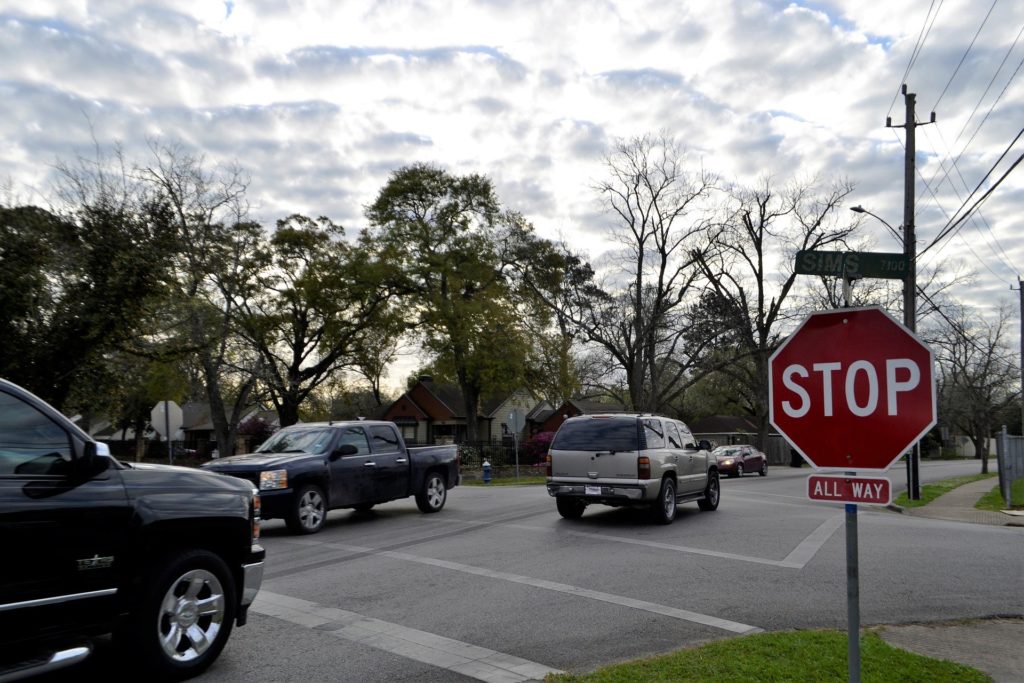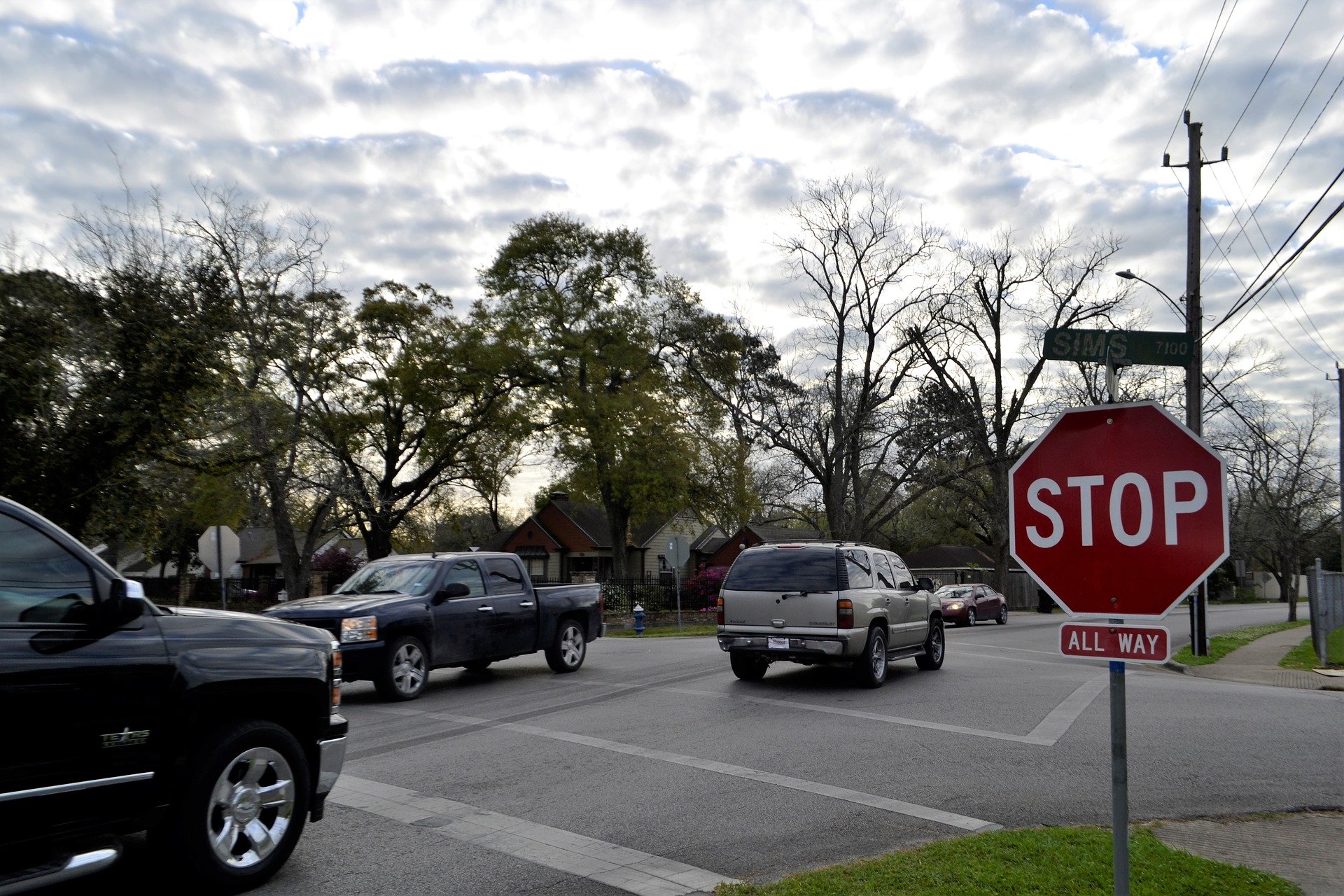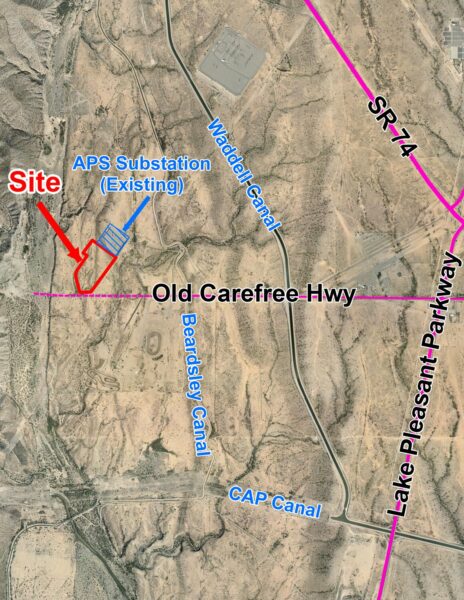
By Paul Basha, traffic engineer, Summit Land Management
The applicable law of physics is perfect: two objects cannot occupy the same space at the same time.
The rules of good driving are also quite understandable and easy to obey…Perhaps not.
1. The first vehicle to arrive at an approach to a four-way stop has the right to enter the intersection first.
2. When two vehicles arrive simultaneously at a four-way stop, the vehicle to the right has the right-of-way to enter and depart the intersection first.
3. When two vehicles arrive simultaneously at a four-way stop, in opposite directions on the same street, and one of the vehicles is traveling straight and the other vehicle is turning left, the straight vehicle has the right for first entry and exit.
4. When two vehicles arrive simultaneously at a four-way stop, in opposite directions on the same street, and one of the vehicles is turning right and the other vehicle is turning left, the right-turning vehicle has the right to enter and depart the intersection first.
The first rule applies regardless of whether the first vehicle is going straight, turning right, or turning left. Easy when it is obvious which vehicle arrived first.
The greatest difficulty occurs when two drivers arrive at a four-way stop close to simultaneous. Each driver is uncertain of the other driver(s) definition of simultaneous or of the other driver’s attention to driving at that moment. (As Baba Ram Dass wrote, “Be Here Now”.) This circumstance is the reason for the subsequent rules. Easiest to gauge another driver’s awareness if the other driver uses their turn signal – astonishingly beneficial. If only someone would invent a “going straight” blinking signal light. Caution and slow acceleration are best – if it’s a four-way stop, the intersection width is short, and the number of cars is few. Furthermore, chances are quite good no one from NHRA or NASCAR is auditioning for new drivers at exactly that moment and place.
Problems also arise when the remainder of us fail to recognize the obvious superiority of one of us, and do not automatically yield to them.
Yeah, and then there’s this issue with many modern vehicles apparently manufactured without turn signals.
The law applies to bicycles as well. Unfortunately, bicyclists are often too interested in their supremacy; or mentally incapable of downshifting as they approach the stop sign and upshifting as they depart the stop sign; or physically incapable of exerting the necessary muscular energy to decelerate, stop, and resume speed. Wishful thinking that bicyclists will stop at stop signs and properly yield to motor vehicles according to the four logical rules.
(Before someone harshly judges me – as judging others is my responsibility. I have been an avid bicyclist since my youthful morning newspaper delivery days; through days of long distance and
bicycle-camping trips in Michigan and adjacent states; through days of bicycle home-to-work-to- home commuting in Washington state and Arizona; and in past days a century rider. I always manage to be able to stop and restart at stop signs.)
Safer for all of us, and shorter travel times for all of us, if we’re simultaneously attentive and communicative of our intentions: at four-way stops and everywhere.
While we’re discussing turn signals, what about roundabouts?
For small roundabouts, the exits are often too close to meaningfully use a turn signal. For large- diameter roundabouts, especially when other drivers are preparing to enter the roundabout, wise and efficient for each driver to inform other drivers of intent to turn right. For multi-lane roundabouts, when a driver intends to change lanes, they should use their turn signals. Speaking of which, always good to use your turn signal before changing lanes while driving straight as well.
On 20 February 2020, the Indiana Court of Appeals ruled that turn signals in roundabouts are not required. However, the Washington State Department of Transportation on their webpage, “How to drive a roundabout” specifically states to “use your turn signal before you exit”. California, Nevada, Texas, Michigan, Wisconsin, and North Carolina also suggest roundabout turn signal use. Colorado attempted to change their law requiring turn signal use to specifically exclude roundabouts, though the measure failed to pass.
The Arizona Department of Transportation Roundabout Driving Guide states to use your turn signal in multi-lane roundabouts, with no mention of turn signal use or non-use in single-lane roundabouts.
Actually, Arizona State Law 28-754 regarding turn signal use, states you only need to use a turn signal “in the event any other traffic may be affected by the movement”. Talk about personal judgment.
So, all of that should definitively answer the turn-signal-in-roundabout question, eh?
Curious about something traffic? Call or e-mail Paul at (480) 505-3931 and pbasha@summitlandmgmt.com.












